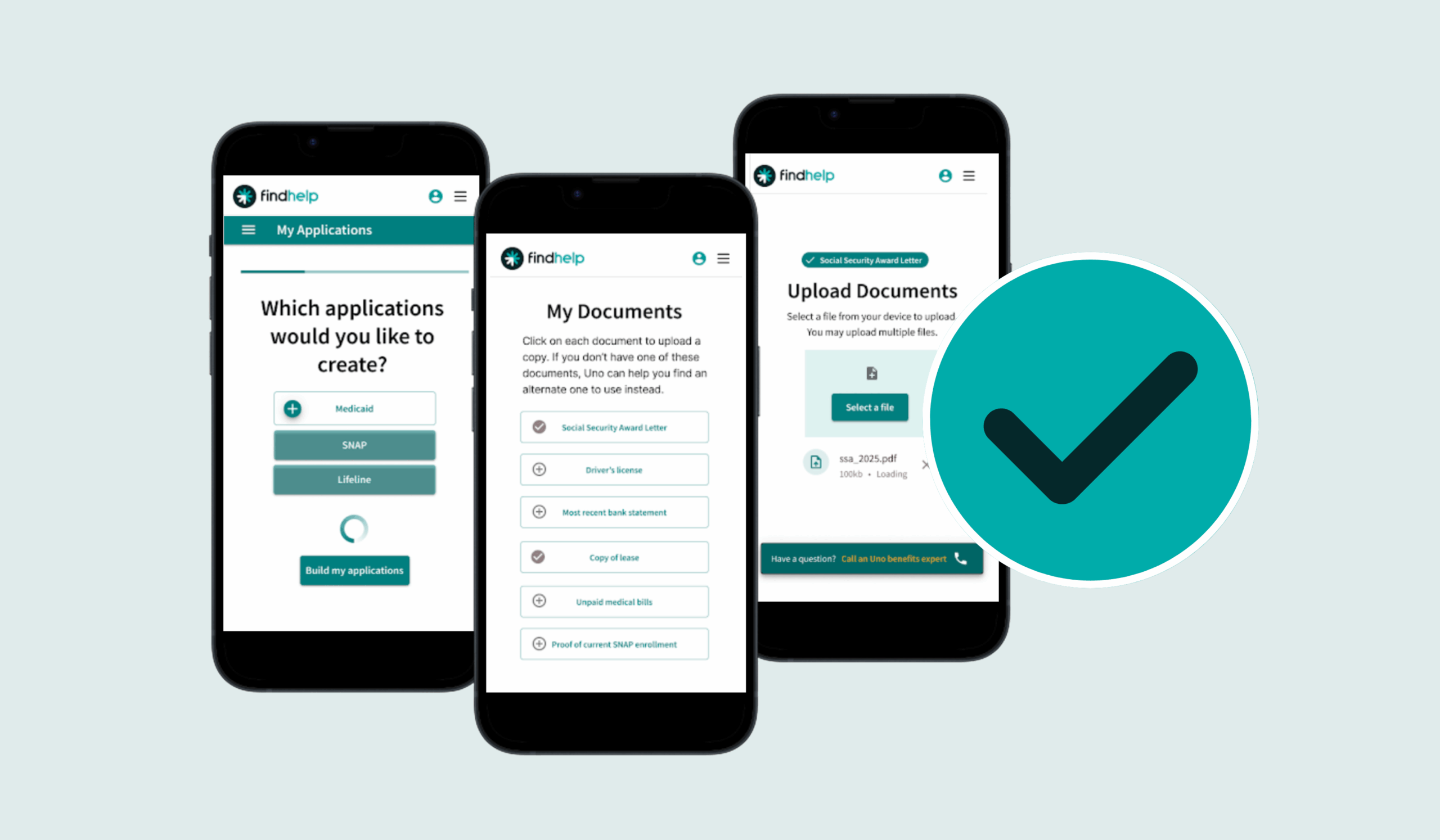CMS SDoH Regulations for Hospitals are Finalized
Healthcare providers have increasing social determinants of health (SDoH) responsibilities as the Centers for Medicare & Medicaid Services (CMS) continues adding SDoH provisions in its annual rulemaking. In this week’s blog, we review what’s new for hospitals in 2025 under CMS’s Inpatient Prospective Payment System (IPPS) final rule.
Over the past several years, CMS SDoH provisions include the addition of screening measures, increased inpatient reimbursement for patients with certain needs, and introduced payment for SDoH assessment and community navigation. Findhelp is here to help you advance your health equity strategies. Use our platform and network to ensure that discharged patients are connected to the community resources they need.

To support our healthcare customers, Findhelp’s policy team closely monitors regulatory developments that impact your SDoH and health equity strategies. This also helps our community-based organization (CBO) network understand partnership opportunities and value propositions for the healthcare providers in their communities. Read on to learn more about the new IPPS provisions for 2025.
CMS SDoH Changes for Hospital Inpatient Settings
CMS’s Inpatient Prospective Payment System (IPPS) rule establishes hospital inpatient payment methodology, updates quality measures, and institutes other hospital programs. The 2025 final rule includes several new provisions that will further engage hospitals in SDoH work.
Increased reimbursement for services provided to people with housing insecurity
CMS increased the severity level designation for inpatient encounters with SDoH Z codes describing housing insecurity and inadequate housing.
- Inpatient claims with these codes will have increased reimbursement to account for the increased costs of caring for people with housing concerns.
- This change expands on the 2024 IPPS provision that increased the severity level designation for inpatient encounters with Z codes for homelessness.
- Hospitals must ensure that the appropriate Z codes are included as a secondary diagnosis.
In the final rule, CMS encourages hospitals to include all SDoH-related Z codes on claims so that the agency can analyze whether social conditions affect the cost of care. Understanding this impact may prompt CMS to change severity levels for other SDoH-related Z codes, if appropriate. Staff can identify and document all SDoH concerns through screening discussions, and can use Findhelp to track post-discharge referrals. This creates safe and effective care transitions and can prevent readmissions penalties.
Age-Friendly Hospital measure added to quality reporting
CMS added an Age-Friendly Hospital structural measure to the hospital inpatient quality reporting (IQR). This means that hospitals will need to attest to having certain infrastructure and processes to meet the goals of the measure.
- This measure assesses hospital commitment to improving care for patients older than 65.
- Hospitals must attest that they have processes in place to assess for social vulnerability, including social isolation, economic insecurity, elder abuse, caregiver stress, and inadequate access to healthcare.
- Positive screens should result in interventions and appropriate referrals.
Hospitals must begin reporting on this structural measure in calendar year 2025, which will impact fiscal year 2027 payments. Hospitals using Findhelp can easily attest to meeting this measure with embedded screening questions, tailored referrals, and a Trusted Network of CBO partners that is configured to meet the needs of older adults.
Mandatory payment model to incentivize quality improvement and care coordination
CMS finalized the Transforming Episode Accountability Model (TEAM), a five-year, mandatory payment model for hospitals in 188 geographic areas. The model begins in January 2026.
- TEAM is a bundled payment model for certain joint, extremity, bowel, and heart procedures.
- The model incentivizes the participating hospitals to reduce fragmentation and improve the transition from hospital to community for patients who undergo the relevant procedures.
- TEAM includes health equity components like social risk adjustment in the payment methodology, health equity plans, and social needs screening.
CMS estimates that TEAM will save the Medicare program approximately $481M over five years. Participating hospitals can leverage Findhelp for social needs requirements and subsequent referrals.
SDoH items on long-term care hospital standardized patient assessment
CMS finalized the addition of SDoH questions on the standardized patient assessment required in Long Term Care Hospitals (LTCHs).
- The LTCH standardized patient assessment must include the housing, food, utility, and transportation questions from the Accountable Health Communities tool.
- This requirement is consistent with standardized patient assessment requirements in inpatient rehabilitation facilities. It also aligns with hospital IQR and inpatient psychiatric facility quality reporting requirements.
While CMS SDoH provisions fall short of requiring referrals for identified needs, the agency recommends referral pathways. Integrate Findhelp’s screening and referral processes into your LTCH EHRs to support simple workflows for closed-loop referrals.
CBOs Can Work with Hospitals to Offer SDoH Services
CBOs are essential partners, and well positioned to offer valuable services to hospitals that are required to identify and address patient social needs. As hospitals increasingly screen for SDoH, they’re identifying more needs and hospital staff often don’t know where to send patients for help. CBOs can build awareness of their services by:
- Claiming your programs in the Findhelp network to ensure you receive referrals and connect with hospital partners.
- Attending a virtual training to make the most of free Findhelp tools.
- Partnering with Findhelp to establish contractual partnerships with hospitals that are looking to invest in SDoH interventions.
Partner With Us to Meet your Regulatory Requirements
Regulatory changes and requirements can become overwhelming, but Findhelp makes SDoH screening and referral workflows easy for customers. Connect with us to learn more about how we can partner to ensure people receive the SDoH services they need. Partnering with Findhelp will bring value to your patients and cost savings to your facility.









